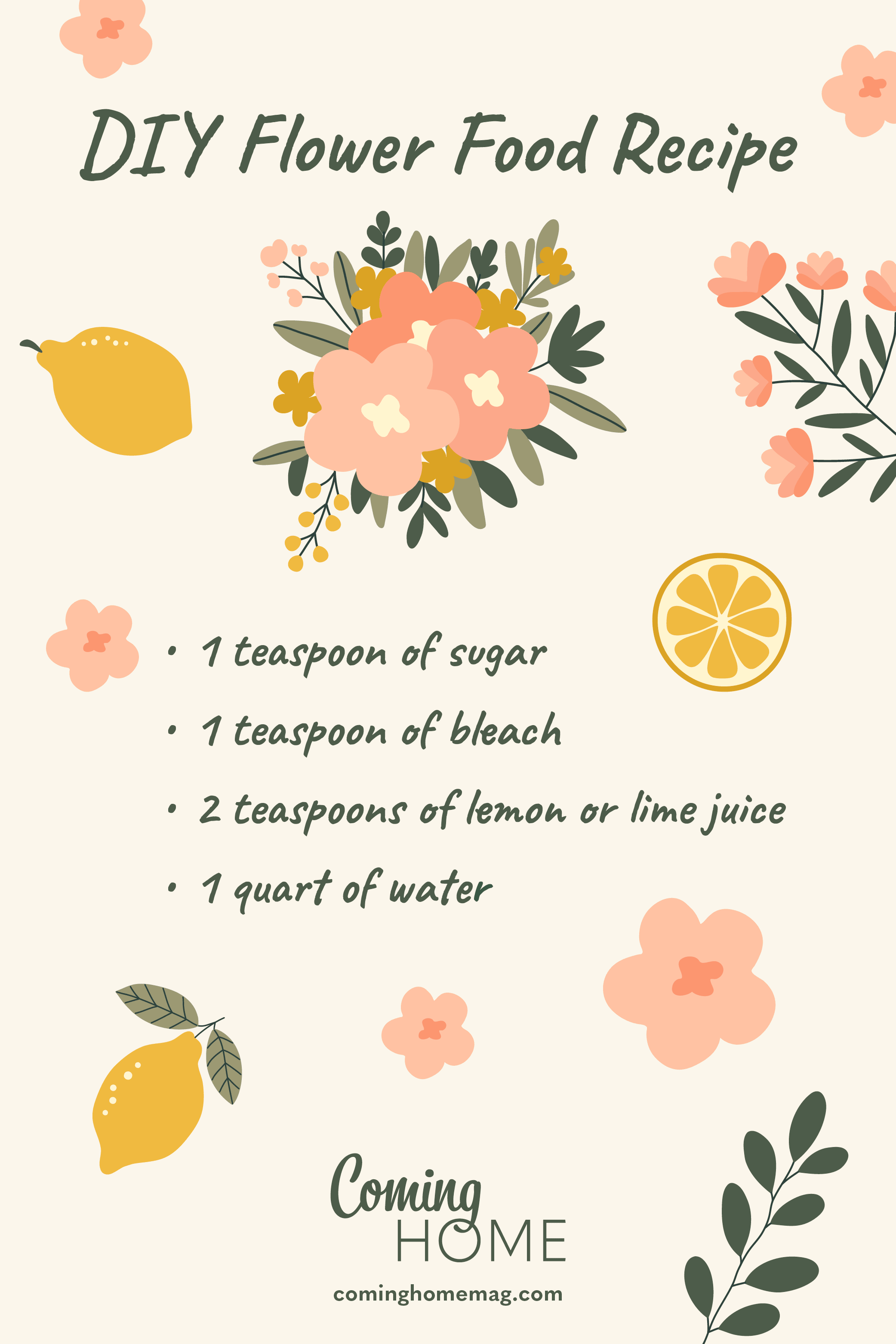How to Make Your Flowers Last Even Longer
There’s nothing better than giving—or receiving—a beautiful bouquet of flowers for Valentine’s Day, your birthday, or a neighborhood event. However, there is just one downside—fresh-cut flowers usually have a pretty short lifespan. Luckily, there are a few tricks to keep your buds from drooping so soon. Use these tried-and-true tips to learn how to make flowers last longer and get the most out of your stunning blooms.
1. CUT THE STEMS CORRECTLY
Before placing flowers in a vase, snip at least one to two inches off the bottom of each stem. You can use clean, sharp scissors, garden shears, or a knife, but make sure to cut at a 45-degree angle underwater to increase surface area and maximize hydration. Put your fresh-cut flowers in your vase as soon as possible, and retrim them every few days or when you change the water.
2. PRACTICE PROPER WATER MAINTENANCE
When it comes to water for flowers, room-temperature tap is typically fine. However, some tap waters have more chemicals than others, so using filtered, distilled, or bottled water will yield best results. You should check levels daily, refill as needed, and completely rinse out and replenish the water every other day to reduce bacteria and fungi. Keep in mind, the bigger the arrangement, the more water you’ll use.
3. REMOVE DYING FLOWERS
Not every bloom will last the same amount of time. Some will wilt and die sooner than others, and when that happens, you need to remove the entire flower and any fallen leaves ASAP. Dead flowers emit ethylene, a gas that can disrupt and drastically shorten the life of your entire bouquet.
4. USE FLOWER FOOD
If your flowers came with pre-made “flower food,” use it! This little packet contains a mixture of sugar, acid, and bleach and will provide important nutrients, regulate pH levels, and promote hydration. If your arrangement didn’t come with flower food—have no fear, you can make your own. Simply combine one teaspoon of sugar, one teaspoon of bleach, and two teaspoons of lemon or lime juice with one quart of water. Don’t forget to add flower food when you change the water!

5. DISPLAY THEM IN THE RIGHT PLACE
How long your flowers last directly correlates to where you display them. Flowers thrive in cool, shaded areas away from strong light sources. Avoid placing your arrangement in direct sunlight, under vents, or near fruits and veggies. Chilling it in the fridge every night can also offer preservation benefits.
6. CHOOSE THE RIGHT VASE
The vase you select can have a significant impact on how long your flowers last. Choose a clean vase that's appropriate for the size of your bouquet. Avoid vases with narrow necks that can constrict the stems, making it difficult for the flowers to take in water. A vase with a wide opening will allow for better air circulation and easier water replenishment.
7. CHANGE WATER REGULARLY
Changing the water in your vase regularly is crucial for maintaining the freshness of your flowers. Stagnant water can promote the growth of bacteria, which can lead to a shorter lifespan for your blooms. Every two to three days, empty the vase, rinse it thoroughly, and refill it with fresh water. This simple step will help keep your flowers hydrated and vibrant.
8. PRUNE LEAVES BELOW THE WATERLINE
Leaves and foliage that are submerged in the water can decay and release harmful bacteria into the vase. To prevent this, remove any leaves below the waterline in your vase. This will help maintain the water's cleanliness and prolong the life of your flowers.
9. AVOID HEAT AND AIR DRAFTS
Extreme temperatures and air drafts can cause your flowers to wilt prematurely. Keep your bouquet away from heating vents, radiators, and areas with strong drafts. Similarly, avoid placing them next to appliances that emit heat, such as ovens and microwaves. Optimal room temperature and air circulation will help your flowers stay fresh for longer.
10. CONSIDER RECONDITIONING
If you notice your flowers are starting to wilt, you can try reconditioning them to extend their life. Submerge the entire bouquet in water for a few hours to rehydrate the stems. You can also recut the stems at a 45-degree angle to expose fresh tissue and improve water absorption. Reconditioning can give your flowers a second chance and add a few more days to their lifespan.
11. MAINTAIN HUMIDITY
Flowers thrive in a humid environment, as it prevents them from drying out too quickly. You can create a humid microclimate for your bouquet by placing a shallow dish of water near the vase. As the water evaporates, it will increase the humidity around the flowers and help them stay hydrated.
12. ADD ASPIRIN OR COPPER COINS
Some home remedies, like adding an aspirin tablet or a copper penny to the water in your vase is thought to provide nutrients and inhibit bacterial growth. While the scientific evidence is limited, many florists and enthusiasts swear by these tricks as effective ways to make flowers last longer.
What To Do After Making Your Flowers Last Longer
Unfortunately, all good things must come to an end, including your arrangement. But that doesn’t mean you have to stop enjoying your flowers. Once you've used these tips for how to make your flowers last longer, leave your petals out to dry or use the oven or microwave to quickly reduce their moisture. Use the petals to decorate your favorite candle, make a potpourri, or press and frame for a lasting memory.